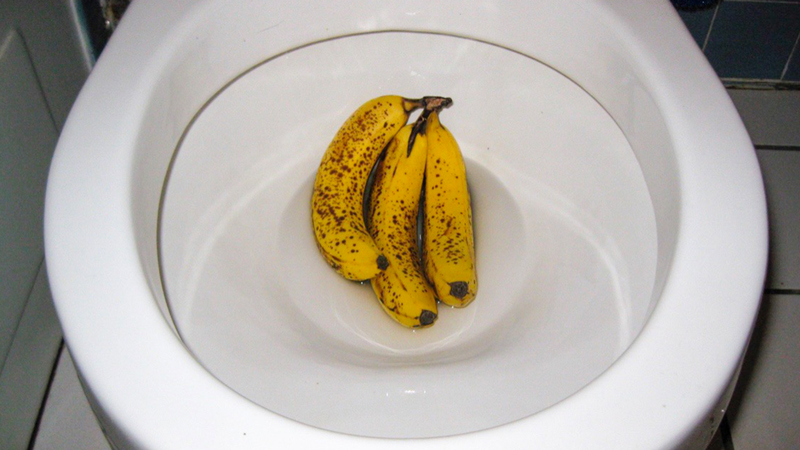Can You to Flush Food in the Toilet?
Can You to Flush Food in the Toilet?
Blog Article
They are making a few good pointers on What Can Happen If You Flush Food Down the Toilet? as a whole in this great article directly below.

Intro
Many people are commonly confronted with the dilemma of what to do with food waste, especially when it involves leftovers or scraps. One usual question that develops is whether it's all right to flush food down the commode. In this post, we'll look into the reasons that individuals might consider purging food, the consequences of doing so, and alternative methods for correct disposal.
Reasons people might consider flushing food
Lack of understanding
Some individuals may not recognize the possible injury brought on by flushing food down the bathroom. They may erroneously believe that it's a safe practice.
Comfort
Flushing food down the toilet might feel like a quick and easy service to disposing of unwanted scraps, specifically when there's no nearby garbage can available.
Negligence
In many cases, individuals may simply pick to flush food out of sheer laziness, without considering the consequences of their actions.
Repercussions of flushing food down the commode
Ecological influence
Food waste that ends up in waterways can contribute to contamination and damage aquatic ecosystems. Additionally, the water made use of to flush food can stress water sources.
Plumbing concerns
Purging food can lead to clogged pipes and drains pipes, triggering costly plumbing repair work and troubles.
Kinds of food that need to not be purged
Coarse foods
Foods with fibrous appearances such as celery or corn husks can get tangled in pipelines and trigger obstructions.
Starchy foods
Starchy foods like pasta and rice can soak up water and swell, causing clogs in pipes.
Oils and fats
Greasy foods like bacon or cooking oils ought to never be purged down the toilet as they can strengthen and create clogs.
Correct disposal techniques for food waste
Utilizing a waste disposal unit
For homes equipped with waste disposal unit, food scraps can be ground up and purged via the pipes system. However, not all foods are suitable for disposal in this fashion.
Recycling
Particular food product packaging products can be reused, lowering waste and reducing environmental impact.
Composting
Composting is a green means to get rid of food waste. Organic materials can be composted and used to improve soil for horticulture.
The relevance of correct waste management
Decreasing environmental damage
Correct waste administration practices, such as composting and recycling, assistance lessen pollution and maintain natural deposits for future generations.
Shielding plumbing systems
By avoiding the method of flushing food down the bathroom, home owners can avoid expensive plumbing fixings and preserve the honesty of their plumbing systems.
Verdict
In conclusion, while it may be alluring to purge food down the toilet for benefit, it is very important to recognize the possible repercussions of this action. By embracing appropriate waste monitoring practices and taking care of food waste properly, individuals can add to much healthier pipes systems and a cleaner setting for all.
FLUSH FOOD DOWN THE TOILET?
FLUSHING FOOD CAN CAUSE BLOCKED DRAINS IN YOUR HOME
All of the plumbing fixtures in your home are connected to the same sewer pipe outside of your home. This outdoor sewer pipe is responsible for transporting all the wastewater from your home to the Council sewer mains. Even small pieces of food that go down the kitchen sink can cause problems for your sewer. It should therefore be obvious that flushing larger bits of food, such as meat, risks a clog in either the toilet itself or the sewer pipes. Flushing greasy food is even more problematic because oil coagulates when it cools, coating the interior lining of your pipes.
THE TOILET IS NOT A BIN
Food isn’t the only thing that people shouldn’t be flushing down the toilet. People use the toilet to dispose of all kinds of things such as tampons, makeup wipes, dental floss, kitty litter and even underwear. Water goes to great lengths to educate residents about the high costs and stress placed on wastewater treatment systems simply from people flushing the wrong stuff down the toilet. It costs taxpayers millions of dollars each year, and homeowners thousands in blocked drain repairs.
FLUSHING FOOD IS A WASTE OF WATER
Flushing food is a waste of our most precious resource - water. In June this year Level 1 water restrictions were introduced to protect water supply from drought conditions. Much of New South Wales continues to be affected by prolonged drought with recent figures revealing up to 97 per cent of the state remains in drought. Depending on whether you have a single or dual flush toilet, every single flush uses between five and 11 litres of water. In the current climate this is a huge amount of water to be wasting on flushing food that should be placed in the bin (or better yet, the compost).
https://www.jabplumbingsolutions.com.au/blog/can-you-flush-food-down-the-toilet

As a keen reader on Flushing Food Down the Toilet?, I imagined sharing that piece of content was really helpful. Sharing is nice. Who knows, you may be helping someone out. I am grateful for your time. Return soon.
Booking Report this page